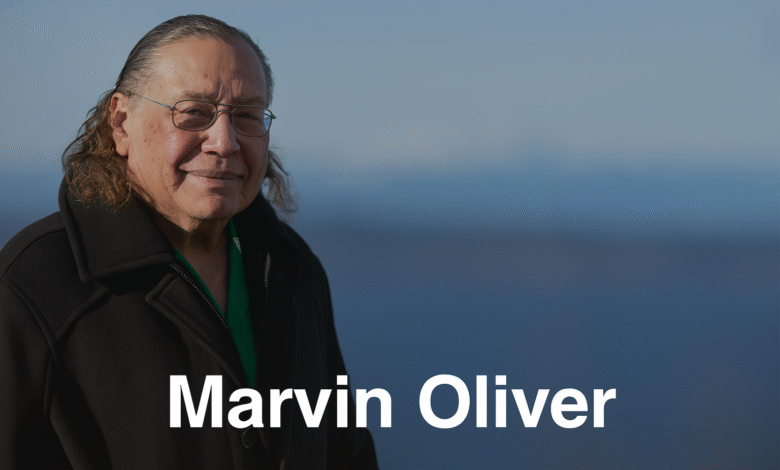Marvin Oliver: Visionary Native American Artist Who Redefined Indigenous Art in America
Exploring the life, legacy, and transformative work of Marvin Oliver—an artist, educator, and cultural pioneer.

Introduction to Marvin Oliver
Marvin Oliver was one of the most influential Native American artists of the 20th and 21st centuries. Known for his bold use of Northwest Coast design and a deep spiritual connection to his Quinault and Isleta-Pueblo roots, Oliver revolutionized Indigenous art through a multidisciplinary approach that blended tradition with innovation. His artistic journey not only showcased exceptional craftsmanship but also reinforced cultural identity across generations.
With a career that spanned over four decades, Marvin Oliver made remarkable contributions as an artist, professor, and mentor. He taught thousands of students, championed Indigenous representation in public art, and bridged ancestral wisdom with modern expression. His powerful legacy continues to inspire through permanent art installations, academic impact, and annual traditions like the Raven’s Feast.
Early Life and Cultural Roots
Marvin Oliver was born on July 1, 1946, in Shelton, Washington. His heritage was rich and complex—his father belonged to the Quinault Nation, while his mother was from the Isleta-Pueblo community, with additional ties to the Laguna-Pueblo tribe. This dual lineage deeply informed his understanding of Indigenous symbolism and spiritual philosophy.
At the age of eight, Oliver’s family moved to the San Francisco Bay Area, where he grew up surrounded by the civil rights movements of the 1960s. These formative years shaped his worldview and fueled his passion for justice, culture, and creativity. His identity as a Native American was a central theme in both his activism and his art.
Education and Academic Journey
Marvin Oliver pursued formal education in the arts at San Francisco State University, where he earned his Bachelor of Arts in 1970. During this time, he actively participated in the Occupation of Alcatraz Island—a significant protest demanding the return of federal land to Native peoples. This pivotal moment marked the beginning of his lifelong commitment to Indigenous empowerment through education and art.
He later completed his Master of Fine Arts at the University of Washington in 1973. Under the guidance of influential mentors such as Bill Holm and Jacob Lawrence, Oliver refined his skills in sculpture, printmaking, and formline design. In 1974, he joined the faculty at the University of Washington, where he remained a guiding force for Native students until his death.
Artistic Style and Influences
Oliver’s artistic signature combined traditional Native American motifs with modern materials like glass, bronze, and steel. He was deeply influenced by the visual language of the Coast Salish and Northwest Coast tribes, incorporating animals like orcas, eagles, and ravens into his compositions. His works often carried spiritual themes of transformation, unity, and healing.
Whether through totemic sculptures, intricate serigraphs, or public installations, Oliver maintained a strong connection to cultural identity. His ability to blend ancestral techniques with contemporary design made his art accessible to both Indigenous and global audiences. This unique approach earned him recognition across museums and academic circles.
Major Works and Public Installations
Among Marvin Oliver’s most celebrated creations is the “Soul Catcher” logo, commissioned by the University of Washington School of Public Health in 1981. The image became an enduring symbol of cultural healing and education. Another landmark piece is Mystical Journey, a glass-and-steel sculpture housed at Seattle Children’s Hospital, symbolizing the journey of life and wellness.
Oliver’s public art can be found in cities like Tacoma, Seattle, Perugia (Italy), and even Japan. His bronze and glass orca sculptures, in particular, became icons of environmental and spiritual consciousness. Each piece tells a story deeply rooted in Native cosmology, presented with a modern aesthetic that invites contemplation and connection.
Teaching, Mentorship, and Raven’s Feast
Beyond his work as an artist, Marvin Oliver was a devoted educator and mentor. At the University of Washington, he championed Native representation in the arts and served as a vital voice in the American Indian Studies Department. He believed in the power of education to uplift communities and encourage cultural continuity.
One of his most beloved contributions was the Raven’s Feast, an annual event that honours Indigenous graduates with a personalized print. This tradition, started in the 1970s, continues to this day and has become a cornerstone of Native student life at UW. Oliver saw the Raven’s Feast as more than a ceremony—it was a cultural rebirth, a gift of identity and pride.
Achievements and Awards
Marvin Oliver received widespread acclaim during his lifetime. His art was exhibited in institutions such as the Smithsonian American Art Museum, Seattle Art Museum, and the Portland Museum of Art. In 2019, shortly before his passing, he was honoured with the Charles E. Odegaard Award, recognizing his lifelong efforts to foster diversity and equity in education.
He also held the position of Adjunct Curator of Contemporary Native American Art at the Burke Museum in Seattle. These accolades not only celebrated his talent but also acknowledged his role in shaping the narrative of Native American art in the modern era.
End of Life and Continuing Legacy
Marvin Oliver passed away on July 17, 2019, in Seattle after battling pancreatic cancer. His death marked the end of an era, but his influence continues to live on through his art, his students, and the cultural programs he helped establish. The rededication of his sculptures, such as A Salish Welcome at the Salmon Bay Natural Area in 2025, reflects the lasting respect for his vision.
Today, his name is synonymous with innovation in Native art. His works are studied, displayed, and revered around the world. More importantly, they serve as living bridges between Indigenous spirituality and contemporary artistic expression.
Conclusion: The Spirit of Marvin Oliver
Marvin Oliver was more than an artist—he was a cultural ambassador, a teacher, and a visionary. His life’s mission was to honor the past while creating new possibilities for Indigenous art in the present and future. Through his creative genius, he preserved traditions and inspired transformation.
His legacy remains visible in the prints on university walls, the sculptures in public parks, and the lives of students who found strength in his mentorship. Marvin Oliver’s journey reminds us that art is not just a product—it is a voice, a ritual, and a promise to future generations.
Frequently Asked Questions (FAQ)
Q1: Who was Marvin Oliver?
Marvin Oliver was a renowned Native American artist and professor best known for his work in sculpture, glass, and printmaking. He was a member of the Quinault and Isleta-Pueblo tribes.
Q2: What is Marvin Oliver famous for?
He is known for blending traditional Northwest Coast Native designs with modern materials. His notable works include public sculptures, educational prints, and the Raven’s Feast ceremony.
Q3: Where can I see Marvin Oliver’s work?
His art is featured in the Smithsonian, Seattle Art Museum, and various public locations in Seattle, Tacoma, and internationally.
Q4: What was Raven’s Feast?
Raven’s Feast is a celebration Marvin Oliver started to honor Native American and Alaska Native graduates at the University of Washington with custom prints.
Q5: What made Marvin Oliver’s art unique?
His ability to merge spiritual and cultural storytelling with modern aesthetics made his art emotionally powerful and visually distinctive.



